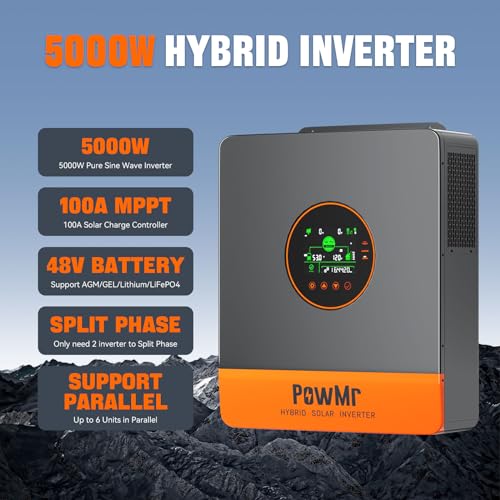What are the requirements for use of photovoltaic inverters?
The basic criteria of photovoltaic inverters include rated voltage, capacity, efficiency, battery, output AC power quality, maximum power point tracking (MPPT) performance, communication characteristics and safety.
1) Rated voltage
The primary function of a photovoltaic inverter is to convert a variable DC voltage from a photovoltaic cell (sometimes a regulated DC voltage) into an AC voltage to power an AC load. The most commonly used single-phase and three-phase AC voltages are 120V/220V and 208V/380V respectively, and 480V is also common for industrial applications. For the selected inverter topology, the range of output AC voltage will determine the DC bus voltage and the rated voltage of each semiconductor switch.
2) Capacity
Capacity is another term for the power rating of a photovoltaic inverter. This value ranges from 200 watts (photovoltaic cell module integrated module) to hundreds of kilowatts. The larger the capacity, the larger the volume of the inverter, and the higher the price (the cost of the photovoltaic inverter is measured in US dollars/watt). As far as a proper design is concerned, surge, overload and continuous working mode must be taken into account when determining the capacity.
3) Efficiency
Every photovoltaic inverter puts forward high requirements for efficiency (output power/input power). For example, the typical efficiency requirement of a multi-kilowatt inverter reaches more than 95%. Based on the fact that the energy conversion efficiency of solar array is relatively low (about 15%), high-efficiency inverter is of great significance in terms of obtaining the maximum output power with the smallest solar cell capacity.
4) Battery
Installing a battery pack on the DC side of the inverter acts as an energy buffer, which can smooth the possible fluctuation of DC voltage and store the unused energy of the load.
5) Output power quality
Due to the inherent switching mode characteristics of the inverter, its AC output waveform is not an ideal sine wave, and usually contains a wide range of high-frequency harmonics introduced by pulse width modulation (PWM), which is harmful to many electronic loads.
6) Maximum Power Taste (MPPT) Performance
Because the output of solar cell follows a series of characteristic curves under different lighting conditions in its current-voltage curve, the voltage needs to be dynamically adjusted in order to obtain the maximum power output.
7) Communication characteristics
For a multi-kilowatt photovoltaic inverter, it is necessary to build a communication connection for monitoring and data storage. Thanks to today's digital age, the microprocessor (MCU) as a general controller is very suitable for experimenting with this function.
8) Safety
Safety has two meanings: one is to ensure the safe and stable operation of the photovoltaic power generation system; the other is to ensure the personal safety of staff during operation, maintenance and repair.


What are the requirements for use of photovoltaic inverters?:Looking forward to your comments !